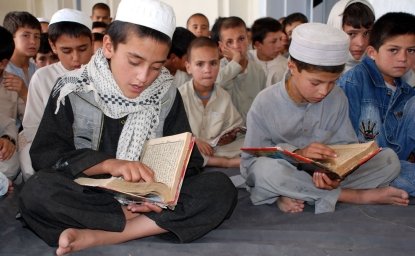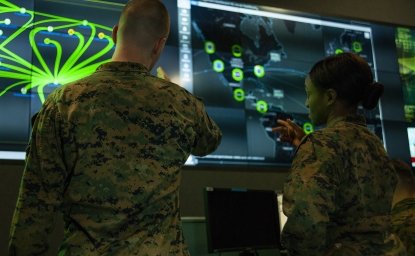
A blog of the Indo-Pacific Program
On March 23, United Nations Secretary General Antonio Guterres called for an immediate global ceasefire in the world’s conflict zones in order to manage the fallout from the global coronavirus pandemic. While Guterres’s call may be a noble one, in Southeast Asia, managing conflict could prove to be challenging for key governments through the rest of 2020 amid broader challenges and realities beyond contending with COVID-19.
Southeast Asia has not experienced a major war since the Sino-Vietnamese war in 1979, and the region is certainly a far cry from where it was in the midst of the Cold War, where it had been dubbed the “Balkans of Asia”. Nonetheless, the region is home to several unresolved conflicts and disputes, including unsettled territorial and maritime claims between countries that flare up on occasion or contestations within them that preoccupy policymakers.
Of these, of particular note are insurgencies that continue rage in Myanmar, the Philippines, and Thailand. Despite some flickers of hope in these conflict zones, and the fact that the coronavirus is likely to consume governments for the foreseeable future, each of these could nonetheless prove difficult to manage in 2020 and beyond.
In Myanmar, while international headlines often focus on Aung San Suu Kyi or the National League for Democracy (NLD) government which she leads, this obscures a more complex reality of massively contested governance where the military (known as the Tatmadaw) retains significant political power. Moreover, the Burmese government in Naypyidaw remains embroiled in a decades-long conflict with several armed ethnic groups, with peace still proving elusive.
And thus far, calls for a COVID-19 ceasefire at home and abroad have gone unheeded by the Tatmadaw.
Even though the NLD will be contending with a range of challenges through 2020, with elections set for later this year and the country registering its first coronavirus cases after weeks of denials, developments suggest that conflict is likely to continue to play out for the rest of the year. Indeed, the fundamental dynamics at play – including fraught civil-military relations, frustrations among ethnic groups about the terms the central government is offering, and divisions among these groups themselves – suggest that there is little chance of mitigating conflict in a meaningful, sustainable manner until the dust settles after the 2020 elections, if not beyond. And thus far, calls for a COVID-19 ceasefire at home and abroad have gone unheeded by the Tatmadaw.
In the Philippines, while the government of President Rodrigo Duterte did finally fight off a months-long siege by Islamic State-backed militants in Marawi City and made some inroads in a peace process in the country’s south, it still faces significant challenges in sustaining these gains as well as managing a range of other insurgent groups, including the Abu Sayyaf, the Maute Group, the Bangsamoro Islamic Freedom Fighters, and the New People’s Army.
The primary focus for Manila in 2020 will be on the successful implementation of the peace process with the Moro Islamic Liberation Front (MILF), including progress in the development of the Bangsamoro Autonomous Region of Muslim Mindanao (BARMM) established last year and which just commemorated its first anniversary in a sober fashion amid the COVID-19 outbreak. But making advances toward peace in this region will be complicated by ongoing governance challenges for the Bangsamoro Transitional Authority, the risk that other groups may undermine the peace process, and the potential for Manila to be overwhelmed by other internal security priorities – including additional manifestations of militancy as was seen in Marawi or a flaring communist insurgency that continues despite a ceasefire announced earlier this month. With respect to foreign policy, uncertainty with respect to the U.S.-Philippines Visiting Forces Agreement and its security implications will also continue to loom large in the coming months.
In Thailand, the government continues to battle a decades-long insurgency that revived itself in a more intense form in the three southernmost Muslim-majority provinces as of 2004. But it is doing so amid serious governance challenges for the country, which has gone through three coups since this wave of the insurgency began (in 2006, 2009, and 2014) and three general elections (2011, 2014, and 2019) which have been viewed to some degree as illegitimate by groups on both sides, with the last eventually cementing the rule of junta chief Prayut Chan-o-cha.
And with the Thai government still confronting fundamental issues with respect to its own legitimacy, worries will persist about the potential for Bangkok to become distracted by other pressing priorities as we have seen in the past.
Renewed talks that kicked off early this year may have offered some initial hope for 2020 But true progress will require getting past familiar and formidable obstacles, including hurdles placed by spoilers on both sides as well as arriving at compromises on difficult questions such as meaningful autonomy and the future shape of the security presence there. And with the Thai government still confronting fundamental issues with respect to its own legitimacy, worries will persist about the potential for Bangkok to become distracted by other pressing priorities as we have seen in the past. The silence we have seen from the Thai government thus far in response to a historic ceasefire declared by the BRN suggests that the any path towards peace will not be an easy one to chart.
To be sure, even amid the deep challenges that remain across Southeast Asia’s conflict zones, one should not fall prey to the idea that these issues are intractable. Indeed, the historical record of Southeast Asian states being able to manage some of their differences is actually better than is sometimes appreciated, and tentative recent progress in southern Thailand and southern Philippines reinforce the fact that there is reason for hope. How much of that hope can translate into reality, though, will depend on the actors on the ground in what will no doubt be a busy year for peace and conflict in Southeast Asia amid the global coronavirus pandemic.
Follow Prashanth Parameswaran, Asia Program Global Fellow, on Twitter @TheAsianist.
The views expressed are the author's alone, and do not represent the views of the U.S. Government or the Wilson Center. Copyright 2020, Asia Program. All rights reserved.
Author

CEO and Founder, ASEAN Wonk Global, and Senior Columnist, The Diplomat

Indo-Pacific Program
The Indo-Pacific Program promotes policy debate and intellectual discussions on US interests in the Asia-Pacific as well as political, economic, security, and social issues relating to the world’s most populous and economically dynamic region. Read more





